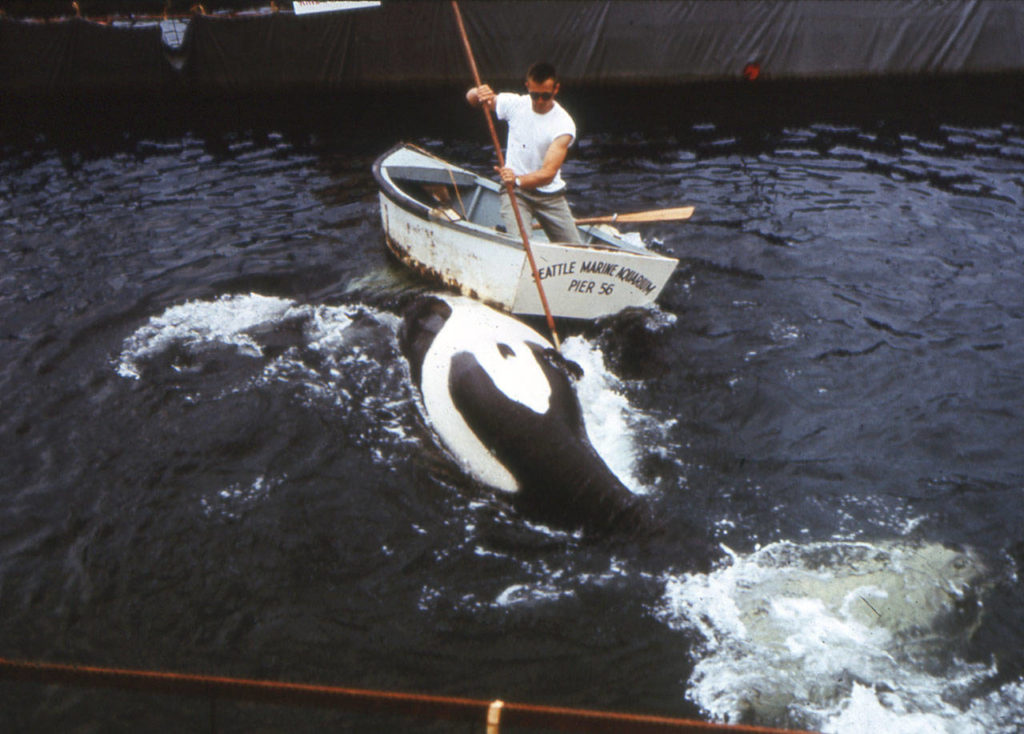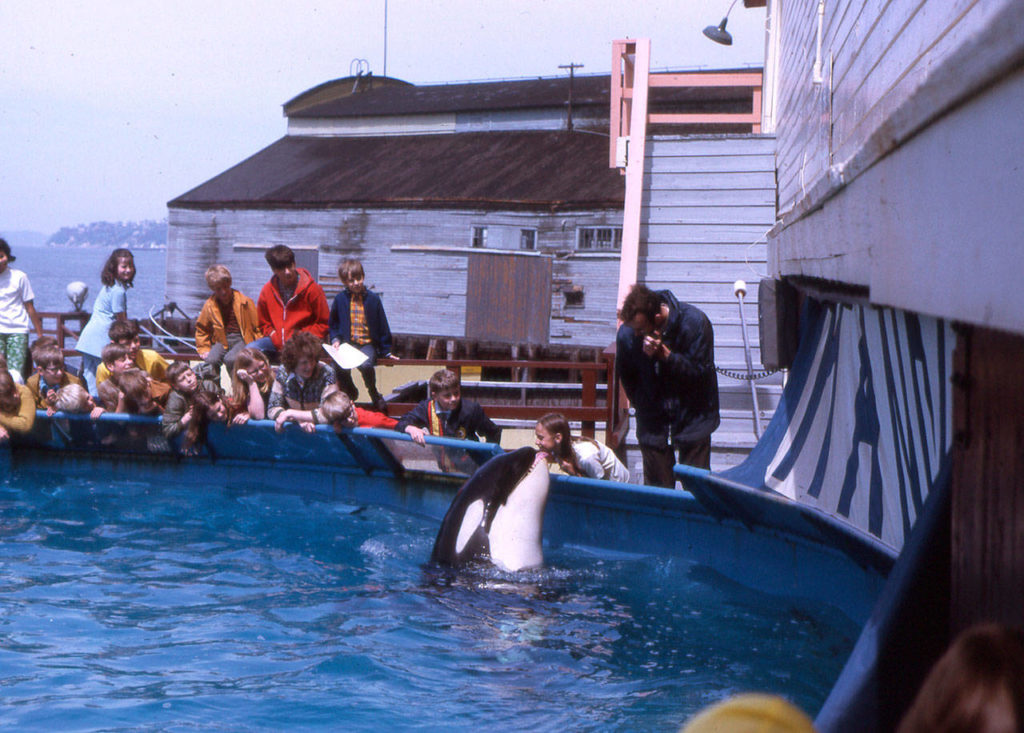Orca researcher Jason Colby’s family has a dark history with the marine mammals.
Colby’s father, John Colby, who worked for the now-closed Seattle Marine Aquarium and SeaWorld, was involved in the 1970s with the now-infamous capture of killer whales in local waters.
It wasn’t until “Blackfish,” a 2013 documentary that stoked controversy about the treatment of orcas at SeaWorld, that his dad’s internal conflict about the captures surfaced. Colby watched his father wrestle with guilt over rounding up and confining the animals.
A historian and professor, Colby, 44, will share his research Nov. 13 at Marysville’s Outdoor Adventure Speaker Series at the Marysville Opera House. His talk will explore humanity’s transformed relationship with the ocean’s apex predator — the orca — and what it means for the future of our local environment.
“There’s a tendency with people to assume that we’ve always loved them and we’ve always had this close connection to them,” Colby said of killer whales. “It was actually a recent development. It was extraordinarily common for fishermen and scientists to kill them up until the late ‘60s.”
In the 1950s, orcas were perceived as pests and threats to the economically valuable salmon fishery, Colby explained. They were killed by the thousands. The National Oceanic Atmospheric Association killed them in the name of science — to study their stomach contents — which is ironic, considering how the agency is a steward for the species today.
Colby, author of “Orca: How We Came to Know and Love the Ocean’s Greatest Predator,” credits Edward “Ted” Griffin with turning things around.
Griffin, now 83, is the former owner of Seattle Marine Aquarium, which closed in 1977. He is best known for capturing, performing with, and selling a number of orcas during the late 1960s and early ’70s.
In 1965, a 22-foot male orca was accidentally caught by a fisherman in Namu, British Columbia. Griffin purchased the whale for $8,000 for his aquarium.
Named after the place he was captured, Namu made world headlines as he made his way from from B.C. waters to the Seattle waterfront in a pen. Thousands lined up along the Deception Pass Bridge to watch Namu, surrounded by an escort of Coast Guard and police boats, go by. The mayor of Langley on Whidbey Island motored out to give Namu a key to the city. Everett’s mayor paid Griffin $10,000 for Namu to visit the city’s waterfront.
Thousands more greeted Namu when he arrived at the Seattle waterfront.
“It gives you a sense of the excitement,” said Colby, who grew up on Bainbridge Island. “It was an extraordinary moment. Namu became this celebrity animal and started this process of reframing the perception.”
More than 100,000 people paid to see Namu perform with Griffin in his first month at the aquarium. Visitors witnessed not only Namu’s size, power and grace, but also his energetic, jovial personality and cute, panda-like appearance.
Namu died from an infection in 1966 — just a year into his captivity — but aquarium operators came to local waters to capture more orcas. In one much-publicized event in 1970, during a roundup of Southern Resident killer whales in Penn Cove, four babies and a mother drowned when they were caught in a net.
Over time, public perception turned against capturing orcas and making them tourist attractions.
“Blackfish,” the documentary, focused on Tilikum, an orca who killed three of his handlers, and the extreme stress orcas can experience when separated from their families.
By then, Colby was already years into research for his book. He conducted many interviews, scoured archives and found old newspaper clippings in his quest to provide a chronicle of humanity’s up-and-down relationship with the marine mammals.
Howard Garrett, co-founder of the Orca Network on Whidbey Island, said Colby’s book, published this year, is an informative read.
“It’s a good overview,” Garrett said. “He’s got the best interest of the whales at heart. It’s pretty upfront that this was an era of exploitation.”
Many of Colby’s interviewees who had encounters with orcas — with either a rifle, harpoon or net in their hand — had conflicted feelings about their time in the captive killer whale industry, just like his own father, who eventually turned against the practice.
Griffin was among them.
“Ted Griffin, like so many other people I interviewed, is a complicated person,” said Colby, an associate professor at the University of Victoria in British Columbia. “He certainly has regrets.”
It’s easy to judge Griffin and others for fueling the now ill-perceived industry, especially when stacking their choices against today’s values. But Colby calls that unfair.
“At the time, live-capturing orcas was the most progressive thing to do,” he said. “The argument was between whale-catching and whale-killing. (Griffin) has a good point.”
While some may still hold grudges, Puget Sound’s orcas are even more endangered today — not from capture, but by hunger. Dams on rivers have severely depleted chinook salmon, the resident orcas’ food supply.
Colby said if people want to help preserve orcas, it starts in the grocery store.
“We talk about Southern Residents starving, and I can still go to the supermarket and find locally caught chinook salmon,” Colby said. “Over a million chinook salmon are caught commercially a year. It’s politically difficult to restrict fishing because fishermen vote.
“Killer whales don’t vote.”
Evan Thompson: 425-339-3427, ethompson@heraldnet.com. Twitter: @ByEvanThompson.
If you go
What: Jason Colby on “The Ocean’s Apex Predator,” part of the Marysville Outdoor Adventure Speaker Series
Where: Marysville Opera House, 1225 Third St., Marysville
When: 6:30 p.m. Nov. 13
Cost: $5
More: 360-363-8400 or www.marysvillewa.gov
Talk to us
> Give us your news tips.
> Send us a letter to the editor.
> More Herald contact information.




























